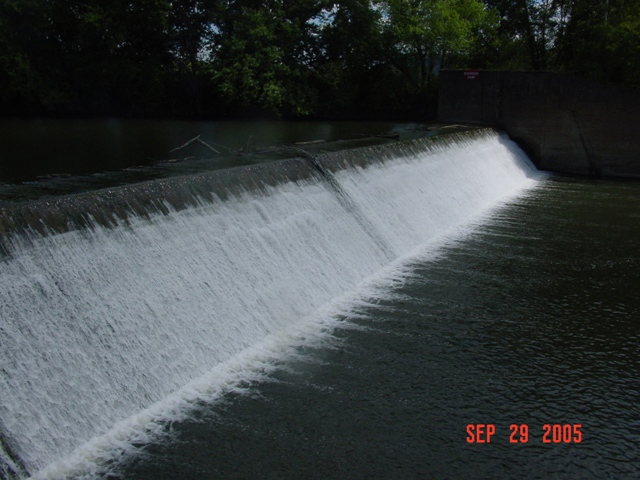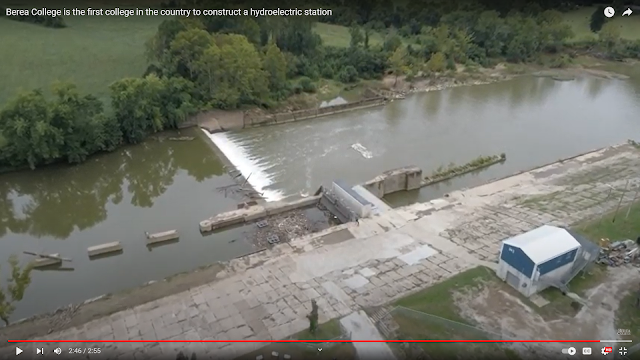This was part of the Kentucky River Waterway.
The dates of operation come from AbandonedOnline.
While studying the truss bridge at Irvine, KY, I noticed on a satellite map that there was construction activity at this lock. They were building the Matilda Hamilton Fee Hydroelectric Station.
 |
| finance.ky.gov "Lock and Dam 12 were built from 1907-1910 and support a nineteen mile long pool of water. The original lock and dam were concrete structures. The structures are located two hundred and twenty one miles above the mouth of the Ohio River. A water release valve was installed in 1998 to transfer water downstream in times of drought." "1997-1998 Sheet piling backfilled with gravel was placed across the main dam and capped with concrete, abutments were rebuilt with new release valves, derrick stone was placed below the dam, concrete cutoff wall was built in the lock chamber, lock filling valves were sealed." |
 |
| Berea "In Estill County, along a stretch of the Kentucky River, five turbine generators are converting a million gallons of water per minute into clean electricity. The 13-foot tall, 23,000-pound turbine generators represent just some of the marvelous technology being used at the Matilda Hamilton Fee Hydroelectric Station, the first hydro plant to be completed by an American college or university. It is also the first small hydroelectric plant built in Kentucky in 94 years. Using the abandoned navigational lock would lower this cost by a third." The project cost $11m, but they were able to get some federal and Kentucky tax credits to offset that cost. |
 |
| Berea "AHA enlisted the hydropower engineers at Kleinschmidt Group to design a powerhouse that could be “shoe-horned” into the lock. They would be able to do that with fully submersible turbine generators developed by Xylem, a leading water technology company based in Sweden. These turbines had significant advantages over conventional turbines. Because they were submersible, they were unaffected by flooding, and they were designed to last 50 years, twice as long as those used for wind or solar plants. Each turbine generator is capable of producing 528 kilowatts of power, for a total plant output of 2.64 megawatts. In addition, variable speed drives not only increased turbine efficiency, they allowed the plant to sync easily to a power grid with existing distribution lines, a significant cost saving." The turbines are designed to last 50 years, which is twice the design life of wind and solar plants. It provides about half of Berea College's electrical needs. Every source I read claims it will keep 11,000 tons of CO2 out of the atmosphere. But no one mentioned a time frame. Is that over the 50 year designed lifetime for the project? (No. That is an annual savings. [HydroReview]) |
“The big thing we’re doing here is we’re using variable frequency drives,” Fairchild said, “which basically allows us to let the turbines run at whatever speed they want to run, rather than being fixed by the grid to run at a specific speed.” [Berea]
We can see the holes into which the turbine units will be installed.
 |
| Jeremiah Potter, Jun 2020, cropped |
It went online in May, 2021. The variable speed technology allows them to get 10% to 15% more power.
 |
| 2:55 video @ 1:02 |
 |
| KentuckyToday, Berea College photo |
Removing debris is obviously an operational cost of hydropower plants. The design for their second plant, which is at L&D #14, allows them to easily flush the debris downstream.
 |
| 2:55 video @ 2:46 |
I hope the price of scrap steel was high when they removed the downstream gates.
.jpg) |
| Jeremiah Potter, Jun 2020 |
No comments:
Post a Comment